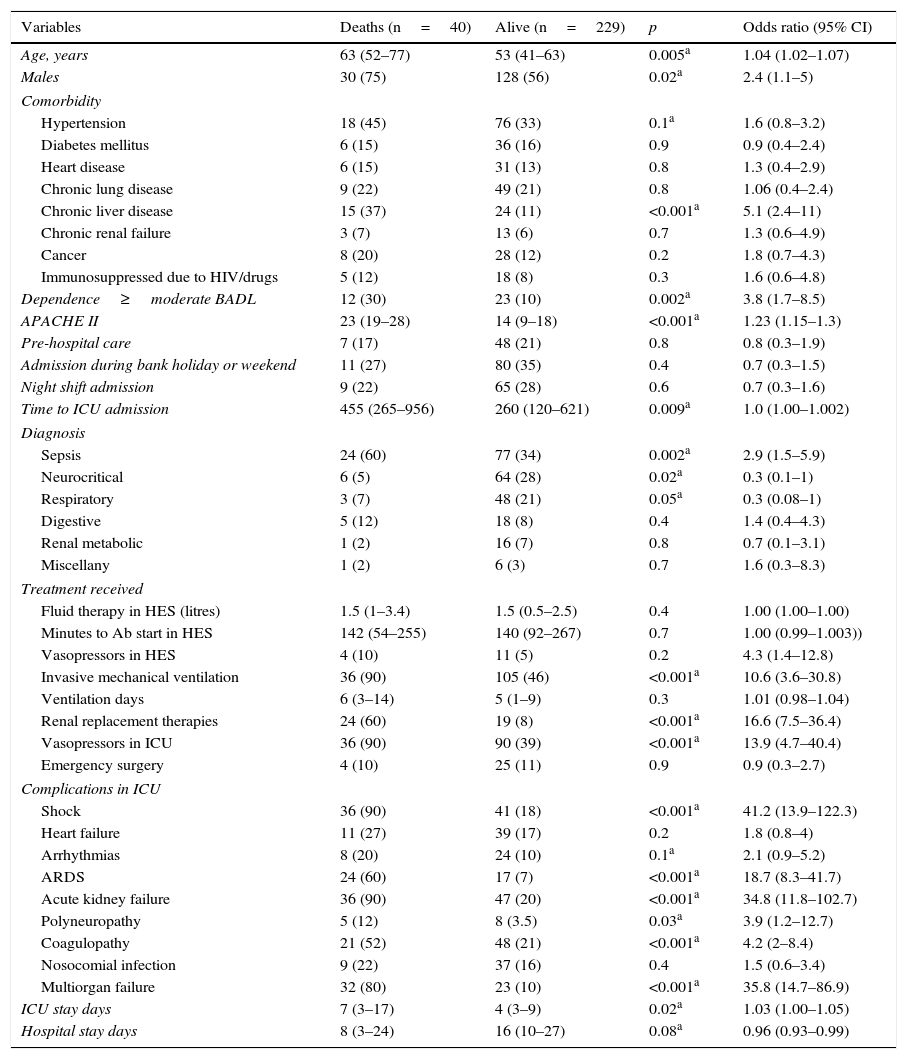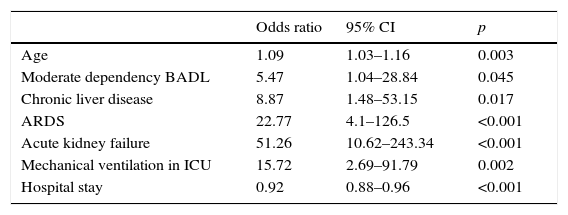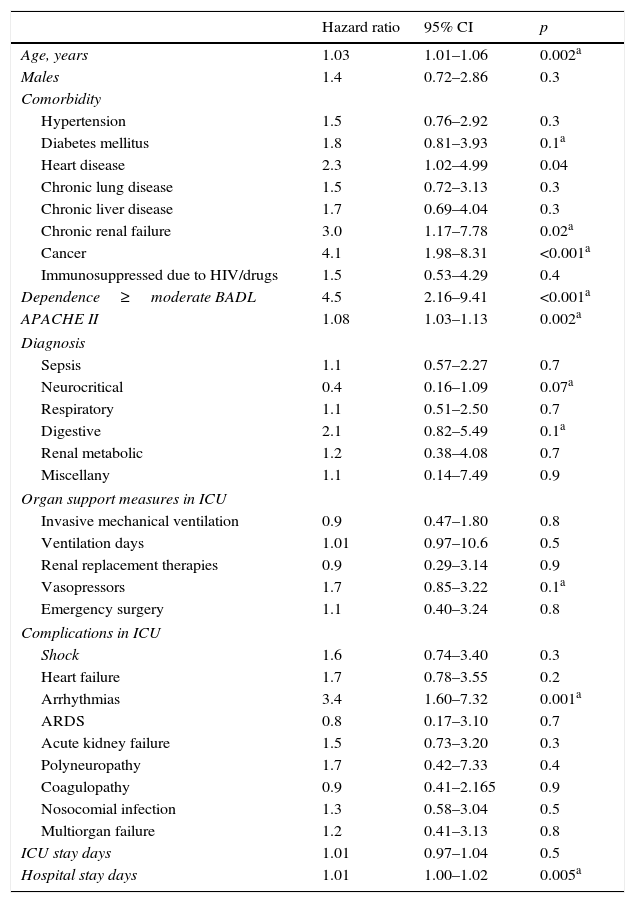A frequent source of critically-ill patients admitted to the ICU is the Emergency Department. It is essential to analyze the short-term prognosis of these patients, but also their evolution after their discharge from the hospital, since this is one of the major concerns of these patients. The aim of this study is to describe the epidemiological characteristics of patients admitted to the ICU from the Emergency Department and to analyze their outcome.
Patients and methodThis consisted of an observational prospective cohorts study which included 269 Emergency Department patients consecutively admitted to the ICU over an 18-month period. Factors associated with hospital mortality were presented as an odds ratio (OR) and factors associated with long-term mortality were presented as a hazard ratio (HR). A P-value lower than .05 was accepted as significant. The overall survival was analyzed on the basis of the Kaplan–Meier curves.
ResultsHospital mortality was 15%, ICU complications where the variables with the greatest impact on short-term mortality: acute renal failure (OR 22.7) and respiratory distress syndrome (OR 51.2). After hospital discharge, the cumulative mortality at 12, 24 and 36 months was 6, 11 and 15%, respectively. The degree of functional dependence (HR 3.7), cancer (HR 3.4) and arrhythmias (HR 2.4) were factors related to long-term mortality.
ConclusionsThe short-term outcome of ICU patients is related to age and comorbidity, but more significantly to the characteristics of the acute illness. However, the long-term outcome is more closely associated with the patients’ characteristics.
Un origen frecuente de los pacientes que ingresan en la UCI es el Servicio de Urgencias. Es necesario analizar el pronóstico a corto plazo de estos pacientes, pero también su evolución tras el alta hospitalaria, puesto que es una preocupación importante de los enfermos. Nuestro objetivo es describir las características epidemiológicas de los pacientes que ingresan en la UCI desde Urgencias y analizar su evolución.
Pacientes y métodoEstudio de cohortes observacional y prospectivo. Incluye 269 pacientes ingresados consecutivamente en la UCI desde Urgencias durante 18 meses. Los factores asociados a la mortalidad hospitalaria se presentan en odds ratio (OR) y a la mortalidad a largo plazo como hazard ratio (HR). El nivel de significación aceptado fue del 5%. La supervivencia global se analizó mediante curvas de Kaplan–Meier.
ResultadosLa mortalidad hospitalaria fue del 15%, las complicaciones desarrolladas en la UCI fueron las variables con mayor impacto en la misma: insuficiencia renal aguda (OR 22,7) y distrés respiratorio (OR 51,2). Tras el alta hospitalaria, la mortalidad acumulada a los 12, 24 y 36 meses fue del 6, 11 y 15%, respectivamente. El grado de dependencia funcional (HR 3,7), el cáncer (HR 3,4) y las arritmias (HR 2,4) fueron los factores relacionados con la mortalidad a largo plazo.
ConclusionesEl pronóstico a corto plazo de los pacientes que ingresan en la UCI se relaciona con su edad y comorbilidad, pero sobre todo con las características de la enfermedad aguda. Sin embargo, la evolución a largo plazo está más asociada a las características del paciente.












